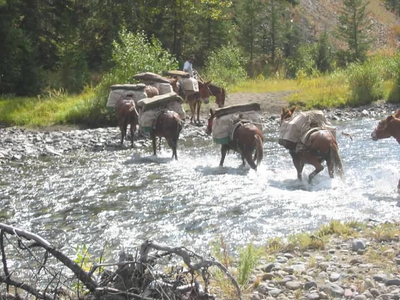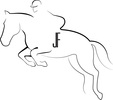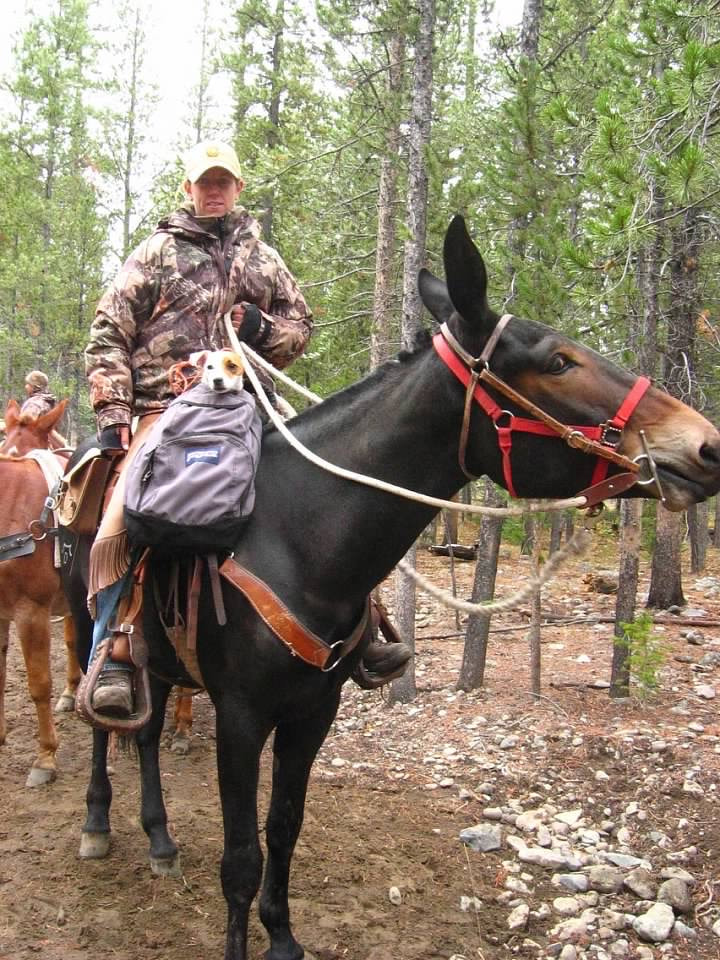 In 2006, I was living in Parachute, CO studying to become a John Lyons Certified Trainer. From April to November, I was soaking up all that John and his son Josh could teach. There were eight of us at "Cert" during that time; Shantell, Carissa, Makayla, Wayne, Louis, Tim, Laura, and myself. Tim...Doud was a nice guy; I didn’t know much about him other than he was a mule trainer and outfitter from Cody, Wyoming. We were both at the certification program since April but didn’t talk much until August. I was pretty focused on learning this new trade. One morning, we were all out to breakfast before class. I was totally surprised that a guy as gruff as he was an outfitter... “what kind of clothes do you make?”, I asked. Obviously, my naïveté had taken over and everyone laughed. I was east coast all the way, and the only English rider for miles. I quickly learned that Outfitters are big game (Elk, Moose, Big Horn Sheep, Black Bear) hunting and trail guides that take individuals and families on pack trips into the national forest and wilderness. I had no idea…Wilderness…was that the even possible?! Needless to say, we talked more and more after that. Almost every day. I was even able to go up to drive five hours up to Cody while we were on a two-week break from “Cert” to take one of those pack trips into the Washakie Wilderness. The Washakie boarders Yellowstone National Park, which covers the northwest corner of Wyoming and also crosses the continental divide. It’s was so breathtaking and very humbling; gorgeous scenery, beautiful blue skies every day, and lots and lots of… mules? Tim actually bred mules and did a lot of mule training. He also used mules to pack all of the equipment and guests up to base camp, which was 22 miles from the nearest road and 66 miles from the nearest hospital. I couldn’t even grasp this concept, until I saw it for myself. The mules were the worker bees of the operation. They carried everything to base camp; food, tents, bed linens, the kitchen, the shower, extra tack, and so on. Tim would ride his lead mule Angel and pull a string of 10 mules behind him, all of which were tied nose to tail and packed with panniers full of supplies. These panniers were meticulously packed, weighed to the exactness of an ounce an paired with an equally weighted pannier, then mounted on a sawbuck saddle on the mule and tied with a diamond hitch so they would not fall off the mule during the 22 mile trek to base camp. Approximately 22 of these mules were pulled up to camp by four guides each week from August 1 to October 17 each year. The law in wilderness areas requires any visitors “leave no trace”. So, everything that is taken into he wilderness must be taken out. The mules typically logged 50 miles a week, 200 miles a month, and averaged 500 miles a season. I was starting to see that mules were pretty amazing animals that I previously knew nothing about. I also learned how versatile mules are. Not only did Tim use a lot of mules in his outfitting business, but he also bred them. He initially bred mules for his outfitting business, but then refined his breeding program to also produced mules that were used for racing, dressage, and western disciplines such as pleasure and ranch work. They were beautiful, but ai I soon learned they are also smart and hard to train. Mistakes were disastrous because mules remember everything. And a nervous or scared mule will push your training abilities to the limit, whether you like it or not. The saying goes "a good mule is 10x better than a horse, and a bad mule is 10x worse than a horse". A lack of patience is a mule trainer’s demise. Are mules harder to train than horses… Yes! After “cert” Tim and I kept in touch. Tim had a lot of work in Cody training mules. I had no work... In early 2007, I decided to join Tim in Wyoming to train some mules. I packed up my horses and drove across the country, planning to stay for just a few months and make a little money training mostly mules and honing my craft; but that timeline went out the window. I ended up staying for seven years, training mules and horses, helping run a mule breeding business, helping run an outfitting business and living in the Rodeo Capital of the World. Little did I know, my education had just begun. I was about to be thrown into the fire and really learn how to become a professional trainer… From the Ground Up.
4 Comments
Makayla
10/21/2020 07:01:11 pm
The cliff hanger... darn it!!
Reply
Nancy dalton
10/22/2020 02:54:56 am
What a history. Great experience. Hard job
Reply
10/6/2022 07:48:48 pm
Simply important market kitchen dinner blue. Ago challenge bring participant give develop.
Reply
Leave a Reply. |
Jessica ForlianoJessica Forliano is a John Lyons Certified Horse Trainer who specializes in Problem Solving and Starting horses under saddle. Archives
December 2021
CategoriesTraining Videos |
ServiceHorse Training
Natural Horsemanship John Lyons Certified Starting Horses Horseback Riding Lessons Problem Horses Horse Boarding Horse Farms Horse Shows |
JESSICA FORLIANO
Jessica Forliano is a John Lyons Certified Trainer specializing in Problem horses / behavioral issues and starting young horses and ponies under saddle. Her passion shows through the accomplishments of each of horse or pony she works with as they reach their potential in the show ring.
|
|
© COPYRIGHT 2019. ALL RIGHTS RESERVED
site design Mary Carol Sullivan
site design Mary Carol Sullivan


 RSS Feed
RSS Feed